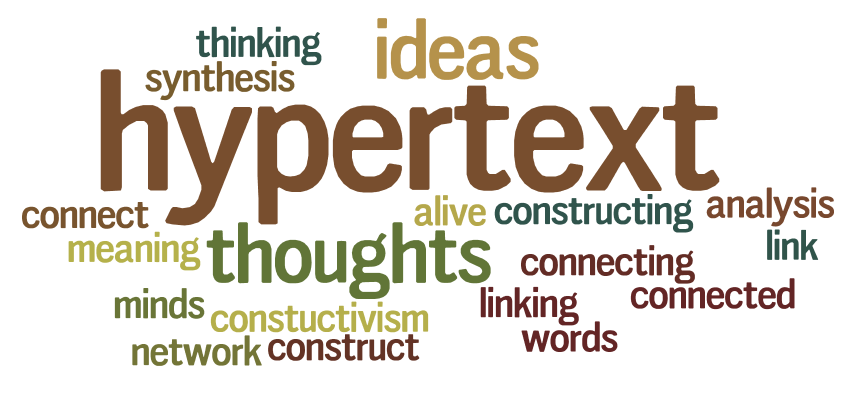I see the future of hypertext fiction evolving as a literary form that will become much more accessible for people. I think that it’s a given that everyone has the ability to write hypertext, but not everyone is aware of hypertext, thus creating a genre that is somewhat rare. Since Twine is such a streamlined software, that I can see it’s popularity growing even more throughout the years, as us and technology evolves. The link-based structure and nonlinearity of hypertext allows artists to express their ideas in a way that comes as close to entering their individual thought process as possible. Nonlinearity has been around since the Soviet Montage Theory of the 1920s and has only evolved since then, and will continue to do so. Nonlinearity has been expressed through literature, film, etc. and I believe it has a place in every art form.
Category: Hypertext
The Future of Hypertext
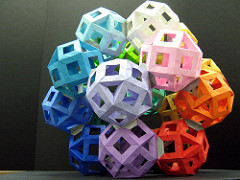
As one who is coming late to the genre of electronic literature, and thus to the form of hypertext fiction, the genre and form are still exciting to me. I may have less than a dozen Twine stories under my belt and my stories are utterly simplistic compared to what others have done, but I still feel curious and inspired when it comes to hypertext fiction. I like to imagine that others feel the same. Truthfully, I don’t have to imagine. Electronic literature as a field of study is still fairly new, and Rettberg’s book is one of the first real academic works on the subject. It was highly anticipated, and that’s because people are still very much interested in it; its forms, function, origin, and future.
The form of hypertext, using the word “form” loosely here, is almost neurological in nature. Just as neurons in the brain form bridges between like items based on association, hypertext fictions jump around with the author’s thoughts. Shelley Jackson described her writing style as “related fragments with no overarching design” (1998) and likened her creative process to stitching a quilt “where each patch is itself a patchwork.” In this way, I feel very like Marshal McLuhan’s “the medium is the message” is validated. The form is part of the story, and it’s intentional. The fragmentation in hypertext very much echoes the way we think in the digital age, clicking links to move between thoughts and gain more information, while our brain struggles to categorize and sort the date into a big picture that makes sense. In this way, hypertext accomplishes what print cannot, and it forces us to grow as readers. If this cycle continues, with writers and readers growing and adapting to ever-changing forms of writing (and I don’t see how it couldn’t) I think the future of hypertext could be even more interesting than its history.
Hypertext over Print
The non-linear nature of hypertext fiction can express more than print can due to the nature of randomness and the arbitrary connections readers create while reading a nonlinear story. Randomness refers to mathematically random sequences, made possible by programming. The word arbitrary refers to decisions or connections made for no specific reason or a not necessarily relevant reason, decisions made by a human. When a story is reordered and put into a nonlinear form that can be regenerated again and again through the use of programming, the reader makes sense of the story in different ways every time. New stories can be formed in the mind of the reader with the same text be formed in different orders, or by new text being created and inserted into a preexisting story. The hyperlinked nature of electronic literature allows viewers to “choose their own adventure” combining the random aspect of programming with the arbitrary nature of the reader’s choices, allowing the story to be rewritten in almost an infinite number of ways.
Electronic literature’s uses the properties of a computer, programmability and the network, creates literature that could not exist in print
Hypertext 2
Hypertext storytelling is an interesting approach to telling stories. The idea of multi-linearity and non-linearity present incredible potential for great stories, and there have been many stories that are compelling and interesting. “Patchwork Girl” by Shelly Jackson for example which was inspired by the classic “Frankenstein” represent how effective hypertext storytelling can be. With all of this potential though, hypertext storytelling wasn’t as revolutionary as some had thought. This happened for different reasons, one being the fact that nonlinear reading, as explained by Steven Johnson, is incredibly hard to write.
“When you tried to make an argument or tell a journalistic story in which any individual section could be a starting or ending point, it wound up creating a whole host of technical problems, the main one being that you had to reintroduce characters or concepts in every section.”
This issue is just one example but it is representative of some of the problems with hypertext. Another example can be seen in “afternoon, a story.” The story is well written and it has interesting characters, but it is incredibly hard to follow with jumping perspectives and just its nonlinear nature. I understand the idea is to explore the story and figure out what happened but because of its format and structure, it is more frustrating than engaging. Of course this isn’t to say that it is a bad hypertext story, it was one of the earlier stories told through hypertext so of course it wasn’t going to be perfect.
Hypertext also has the problem of hardware as pointed out by Robert Coover discussed. Hardware limitations and introduction of new technology have caused some hypertext stories to become unavailable, only accessible through old technology which use old technologies like floppy discs.
Hypertext is certainly not a dead form of storytelling or a bad one, there are still communities that exist like Twine for example, which give users the ability to create incredible multi-linear and non-linear hypertext stories. I think that hypertext has shown the power of nonlinear and multilinear stories and its influence can be felt in many different modern methods of storytelling. It certainly didn’t bring the death of books as Robert Coover suggested in his article, an idea which has not aged well. Traditional storytelling that comes from books will never go away, nor should it.
The Future of Hypertext
I think that hypertext has several advantages that print does not. Print is limited by its own physical space. A book with a large enough amount of information could become uncomfortable to read without splitting the text into multiple volumes. Larger pieces of hypertext fiction would not be as enjoyable to read in a print form because the book required to hold them would be too large and tedious to navigate. The ability to directly link to another page is key to keeping the experience as clear and simple as possible. The definition of hyper text is literally
the writing done in the nonlinear or nonsequential space made possible by the computer.
The digital aspect also lends a lot of extra interactivity that print does not. While print is made up of only letters, pictures, and the pages they are printed on, hypertext fiction has the potential for greater reader participation. I would say that hypertext fiction lends itself well to digital games. There are many games today that are less action based and more decision and story driven. The decisions in these games, such as Life is Strange, The Last of Us, and The Wolf Among Us, determine which part of the story the user gets to experience which is fairly similar to the links within hypertext.
I think hypertext fiction has a broad future because of the different opportunities to experiment within its form. The population of the world today is also becoming more and more digital native, so the clicking of links is almost an innate response when interest is sparked. With a natural understanding of linking and a passion for storytelling more and more new and innovative hypertext fiction will be produced. While most of what I’m saying in this post aligns with Robert Coover’s point of view from “The End of Books”, I do believe that books will continue to be utilized by humans for centuries. Books have a continuous stream of knowledge that take even less effort to read than hypertext fiction. When it comes to people they usually like to do whatever takes the least amount of effort at any given time.
The Future of Hypertext
With the emergence of hypertext in the late 1980’s and early 1990’s, it was seen as both the end of print culture as well as a precursor for the future of how information would be viewed and consumed on the web. In a sense, it served as a bridge from how we used to read information, both fictional and factual, to how we currently do so.
Hypertext certainly allows for the opportunity to express in ways which are limited by print. Shelley Jackson states in regards to her work Patchwork Girl that she thinks in things arranged in a place, and the use of hypertext allows for her to create in a way that is more conducive to her creative method. Additionally, the in class reading of “afternoon, a story” exemplified how many pathways one may take while reading a work of hypertext fiction. While navigating through the story, the reader may gain a plethora of different perspectives based on how they choose to navigate through the story in a way that is clear and concise, something that is not possible with a printed work.
While social media has pushed aside the use of hypertext as of late, the re-emergence of hypertext through platforms such as Twine has allowed for authors to re-explore how hypertext can be used to form an intriguing story through a simple and usable interface. Furthermore, web users familiarizing themselves with social media has in turn familiarized them with hypertext. Referring back to Shelley Jackson, she states:
“Regular web-users already understand implicitly how to read a hypertext; they may not be accustomed to thinking about what they’ve just read as akin to novels and stories, but they will”.
The concept of how hypertext works is a familiar concept understood by the common web-user, which in turn will allow for non-linear storytelling through hypertext to regain prominence in today’s world.
Sources: “Stitch Bitch: The Hypertext Author As Cyborg-Femme Narrator”, Mark Amerika
Change is only a matter of Time: Hypertext
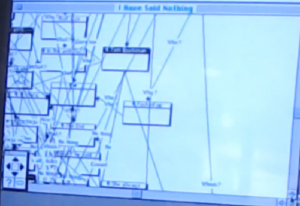 The change from traditional text to hypertext has only happened in the past decade with the advent of the medium as a whole. While hypertext new to the realm of storytelling I don’t think it will have as much of an impact as traditional books did. the use of hypertext has changed our culture and world really, like what was stated in Rettberg how hypertext introduced multilinearity to society. All of us in class grew up with the traditional book but have all learned how to use and interact with hypertext. this doesn’t mean that we all like one or the other better but it will be interesting to see younger generations as they grow up with both forms of storytelling what they will gravitate towards. whether we will all but abandon the traditional style of storytelling or if there will be a balance that happens. the latter is more likely. As well as how we interact with hypertext will change in time and who knows where it will go.
The change from traditional text to hypertext has only happened in the past decade with the advent of the medium as a whole. While hypertext new to the realm of storytelling I don’t think it will have as much of an impact as traditional books did. the use of hypertext has changed our culture and world really, like what was stated in Rettberg how hypertext introduced multilinearity to society. All of us in class grew up with the traditional book but have all learned how to use and interact with hypertext. this doesn’t mean that we all like one or the other better but it will be interesting to see younger generations as they grow up with both forms of storytelling what they will gravitate towards. whether we will all but abandon the traditional style of storytelling or if there will be a balance that happens. the latter is more likely. As well as how we interact with hypertext will change in time and who knows where it will go.
Print vs. Hypertext
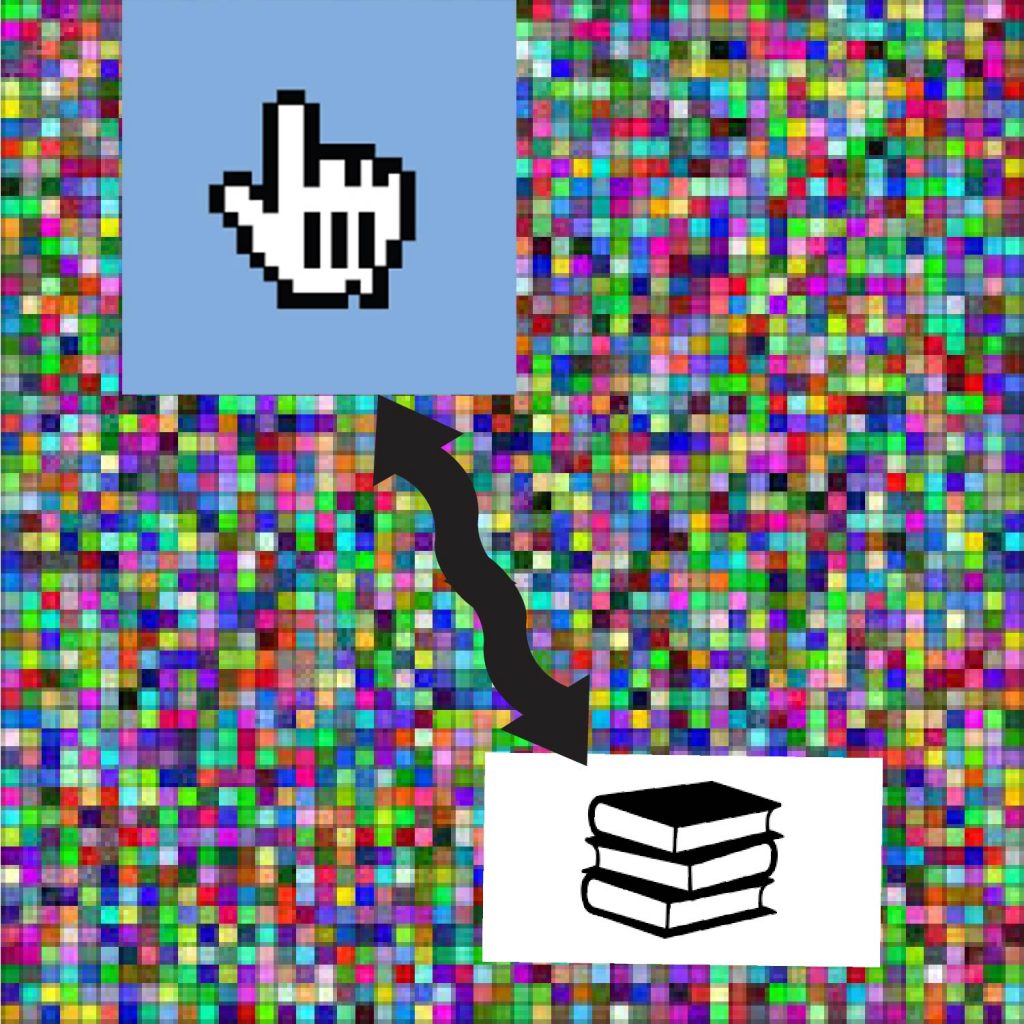
“The difference between reading hyperfiction and reading traditional printed fiction may be the difference between sailing the islands and standing on the dock watching the sea. One is not necessarily better than the other.”
-Carolyn Guyer and Martha Petry Izme Pass
I liked this quote in the reading’s this week. I don’t think we can really say that either of these forms of writing will die out. Both of them have their own place in the literary world. While print may seem like the slow and steady that wins the race, hypertext is the one coming up with multiple paths the race could take.
As technology changes hypertext does too, with new ways to tell the story. With recent uses of hypertext in television and video games, one wonders what the next step is for it?
I think that hypertext does have something different to contribute, that gives a unique experience to the reader. If it’s a nonlinear story the reader has the choice to go back and change the ending if they don’t prefer the one that they got. Or just go back and see what were the other possibilities.
In the reading Why no one clicked on the great hypertext story, I liked how it highlighted the growing hypertext writing that is being seen on different social platforms. In one of my other classes, we talked about this platform, where people come and add to these time travel/ romance themed stories. The stories take crazy turns, but it is a very popular space that people come to share ideas.
My only concern with hypertext along with print is the waning attention span that we seem to have when it comes to reading. It seems that most people take in their stories and information through five-minute clips on the internet. I think the question that needs to be addressed is will society still be willing to take the time to discover these works?
The Future of Hypertext
It has come to my opinion that Hypertext Fiction is unique in a way that let’s the reviewers or the readers think. And really think hard about the decisions that has to be made throughout the journey that they are going on. Whether it’s print or digital it has the potential to have us stop and think about if our choice was correct or not.
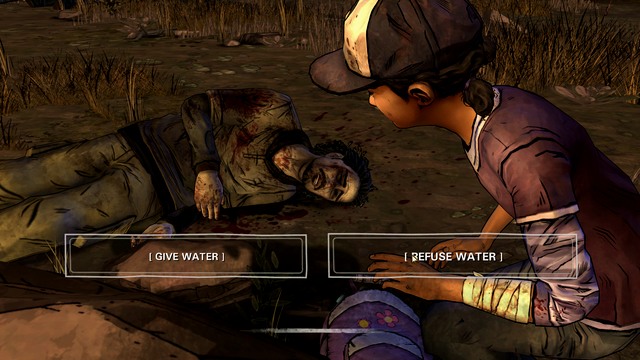
The choices or even the action that we do make us believe about the ominous outcome of the situation that we where put in and let us to believe that in the end… no choice is 100% good.
The future of Hypertext Fiction, to me, is a little bit unclear at this point. I do believe that Hypertext Fiction is a very well-known genre of storytelling that has the potential to go much further then it is at. For years hypertext Fiction has been growing in books as well as digital media but not necessarily in it’s own form but more of
“Instead of prospering as a specific genre in it’s own right, elements of hypertext have opened up new forms and genres. Complex multilinear narrative structures have for example become standard fare in long-term episodic television series.”
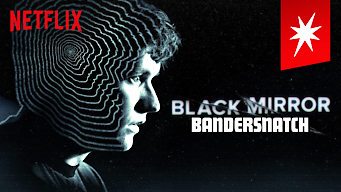
So in conclusion I do believe, in a literal sense, Hypertext Fiction can continue making a huge impact on all of us even if it’s in forms of other types of media but thanks to this program called Twine. everybody can bring there multilinear imaginations to life and expand as far as they want to go.
Sources:
Image caught from “Telltale’s The Walking Dead: Season Two”
Image caught from “Black Mirror: Bandersnatch”
Scott Rettberg’s “Electronic Literature”
Future of Hypertext?
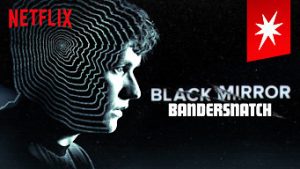
It’s hard for me to say what I think the future of hypertext fiction will be. I don’t think it will die out, as there will always be people and pieces of work that will keep the genre alive. I do however, think that it will dip in and out of popularity as the years go on and as more technology is developed. In the past, hypertext fiction is something that has repeatedly grown popular for a short while, only for it to die down and come back again later. The best example I could come up for this is the company Telltale Games, a gaming company that exclusively creates “Choose Your Own Adventure Games”, or works of hypertext fiction. This company became increasingly popular a couple years ago, to the point of creating stories for big names and other game companies. The Walking Dead, Minecraft, and Batman are a few series’ who got their own Telltale Games. Although all their games got generally favorable reviews, and fans loved playing them, on September 21st, an announcement was made that Telltale Games would be shutting down. The reason? Not enough people were interested in and buying the hypertext fiction genre of video games. Unfortunately, no matter how well something is made, if there isn’t an audience to watch/play/listen to it, then it becomes unprofitable and will come to an end.
I really enjoy hypertext fiction. I like the idea that you decide the outcome of the story, and that your choices truly affect what happens. I do think for a work of this genre to be enjoyable, it needs to be done the right way. If there’s too many or too little options, or the story becomes so meddled and confusing that there doesn’t seem any point in continuing, then it becomes more work than enjoyment. Since a story with multiple storylines can be difficult to properly write out and execute correctly, I feel like this is the image that hypertext fiction often gets. Like I said before, I don’t think hypertext fiction is going to die out (at least anytime in the near future), but I also don’t think it’s going to get extremely popular in the near future. Even newer medias such as Bandersnatch seem to have excitement for a few weeks, and then the whole genre gets lost in the depths of the internet again.
Hypertext definitely goes somewhere that regular print cannot. Print books in the past have been “Choose Your Own Adventure” books. However, the constant flipping of the pages, and navigating through the big piece of text is a lot more frustrating than just being able to click on a particular link in a story and get to the next point. If one were to create a hypertext fiction piece of work, I think most of the time one would lean toward creating it on a digital medium. The evolution of technology and hypertext as one have created this genre of fiction that is compelling, exciting, mysterious, but unfortunately, not very popular.
Hypertext

While the rapid rise of social media does reduce the novelty of hypertext fiction, I believe that this rise, as well as the rise of personal video games (as opposed to games at an arcade), could lead to a resurgence and possible eventual widespread awareness of hypertext fiction and other forms of e-literature. Both social media and video games encourage many of the facets of e-literature: multilinearity (open world games), stories with various concurrent viewpoints (multiple users Tweeting about a breaking event), link structure (moving between pages, sites, accounts, stories, etc from a central social media site)…with these (and more) interactive aspects becoming regular parts of our everyday lives, as well as the growing community of Twine creators and readers, I believe that hypertext fiction could easily grow in public awareness in the coming years.
As far as expressing that which print cannot, I believe that e-literature allows us to experience a story in more dynamic, more personal, and even more lifelike ways. Firstly, a reader is able to more or less choose how they want to navigate through any given e-literature piece, which is a freedom not readily available with traditional printed literature, but is closer to the flexible nature of our own thoughts and memories. The flexible nature of e-literature is also increasingly reminiscent of our own lives: hyperlinks embedded within stories are no longer something strange and startling, but are natural to the modern reader, even lending an air of familiarity or intimacy to the work. I believe this flexible multilinearity also allows a broader kind of story than traditional literature is capable of.
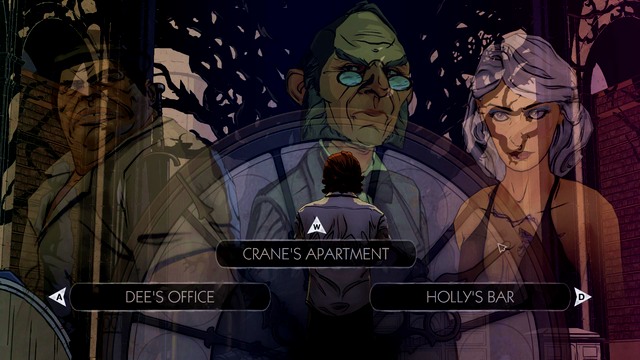
Blog 3-The Future of Hypertext Fiction
It’s hard to say at this point where I think the future for hypertext fiction will be. Hypertext fiction, like anything, can ride the wave of popularity. Hypertext has more options than a physical book that you could pick up at your local store. It gives the reader the ability to choose variety of paths which open up to different sets of dialogue, imagery, and plot. With that in mind here’s what I think would not work in the future. During class last week, as we were reading “Afternoon, a story” (keep in mind that this story was written in 1987) I couldn’t help but feel a bit uncomfortable with how the story was laid out. The way you had to jump from one link to the other by some sort of “tab” was very awkward compared to how you click on something in made in Twine or something similar. Not only that but I, as a reader, didn’t get a sense as to why I should have chosen any of the links listed. It wasn’t because of a lacked interest in the story but rather because I did not feel as if there was enough in the story presented to me to motivate me into making a decision. I could have just read maybe three pages of the story and been contempt with it.
I feel that this style and the style that appeared in “The babysitter” would quickly die off in the world of hypertext fiction. Perhaps back then it would have worked but you have to remember, this is the modern age, and our society is becoming more and more impatient. Everything has to be easy and attention grabbing. A lot of restaurants have some sort of tablet sitting at their tables so that customers no longer have to wait for the server to bring them their menus.
Not a lot of people take the time to read these days. When I say read I don’t mean the type where you are reading simply because your professor and the missing $500 from your wallet is telling you to do so. I mean the kind of reading that you are genuinely interested in like a comic book, Harry Potter, or A Bride’s Tale. Hypertext fiction is not trending these days because it failed to do so when it first debuted. Sure it’s attracting our attention, but that’s because in our case, it has too.
Hypertext also seems to be dying out in video games as well. It’s not that big of a genre anymore, especially Tell Tale games shut down; the makers of games like The Wolf Among Us, Guardians of the Galaxy (game), Game of Thrones (game), Batman (game), Minecraft: Story Mode(game) and the Walking Dead (game). With so many links to connect it takes too long to put out another hypertext fiction into the world. Supply doesn’t meet demand. If you have ever played any of these games you really start to appreciate this type of story telling. You feel in control yet can still be surprised all at once. Almost like some sort of detective. It’s extremely fascinating to make a choice and to see the outcome of your decision. That’s something that you can’t get from a printed book these days.
